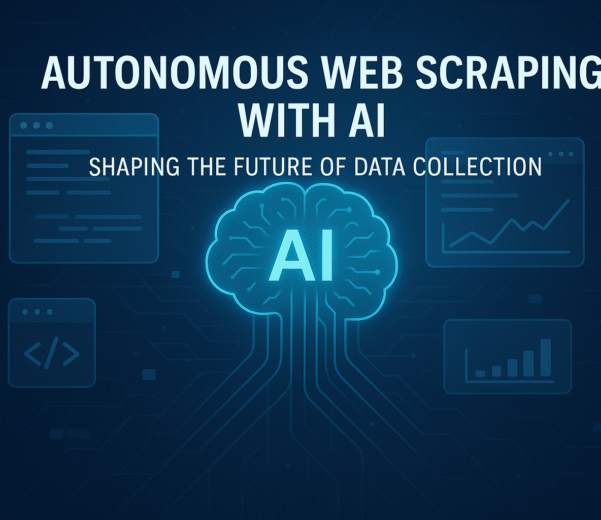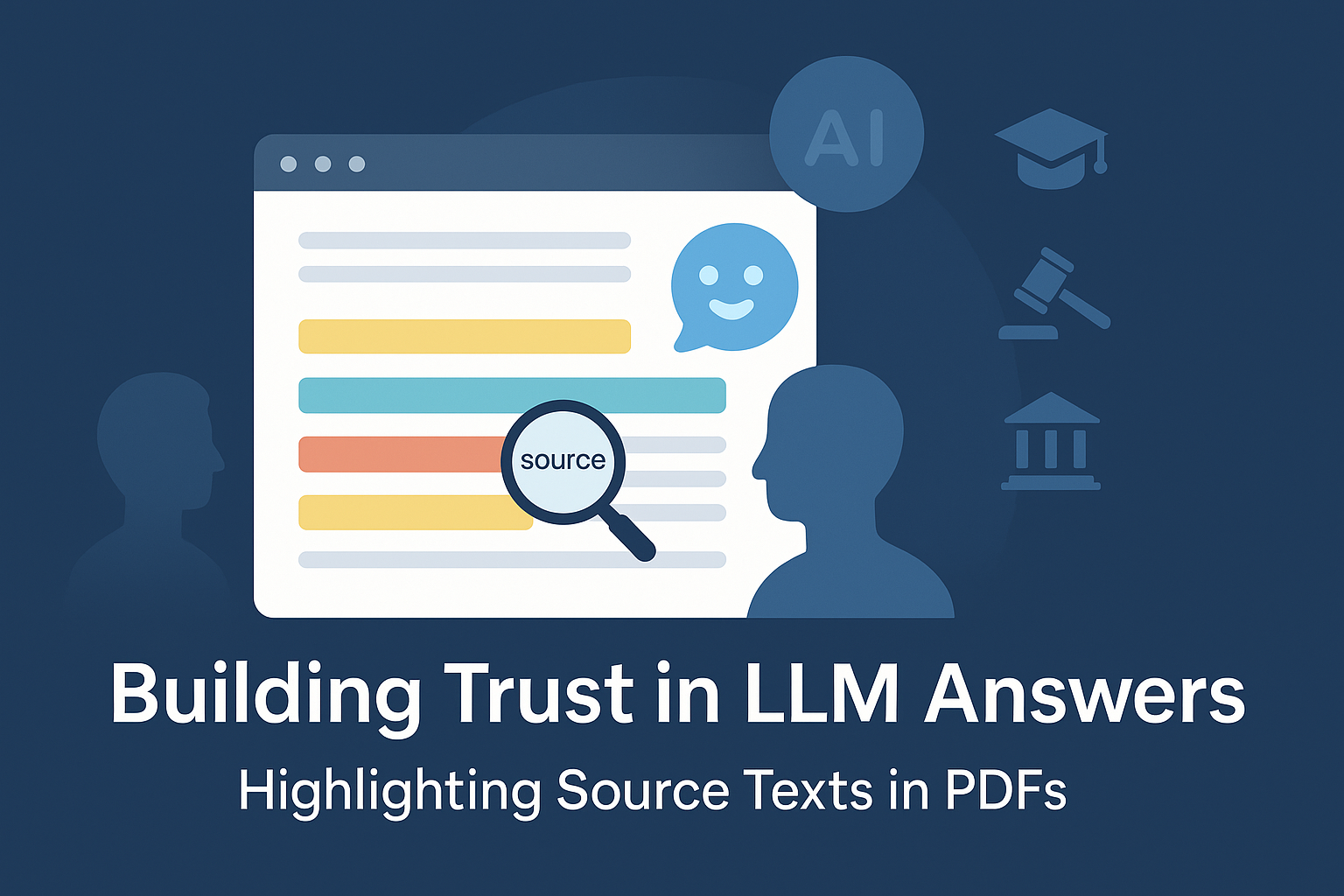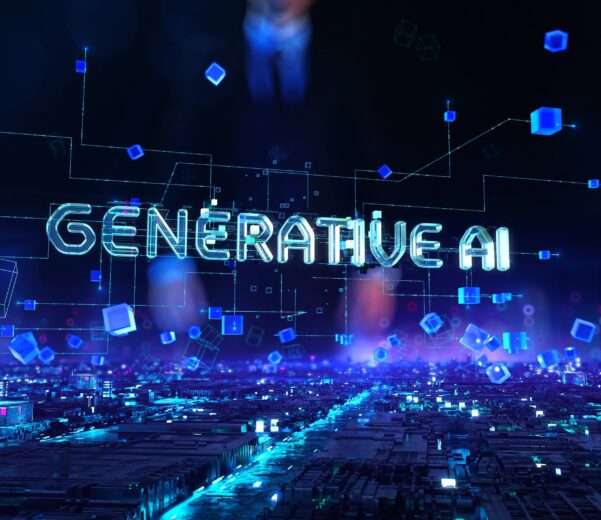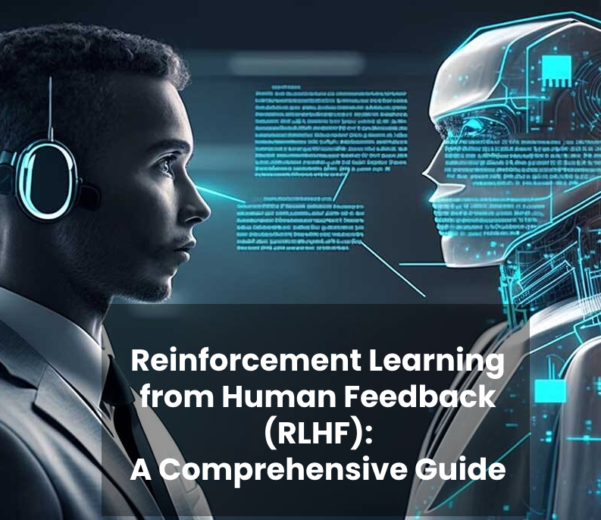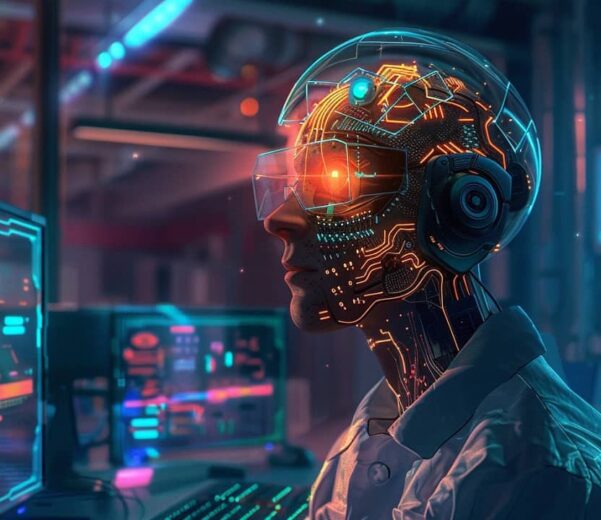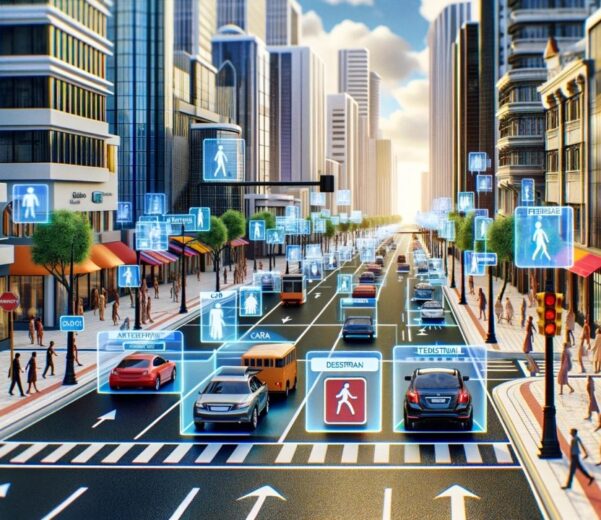Introduction to GenAI
In the rapidly evolving landscape of technology, the advent of Artificial Intelligence (AI) has reshaped industries, revolutionized processes, and redefined what’s possible. Among the myriad branches of AI, Generative AI, or GenAI, stands out as a particularly transformative force. It represents the cutting edge of AI innovation, enabling machines not just to learn from data, but to create new content, mimic human creativity, and even engage in dialogue.
In this guide, we embark on a journey to unravel the complexities of Generative AI and explore how it can be harnessed to drive business growth, innovation, and competitive advantage. We’ll delve into the foundational principles, practical applications, and strategic considerations that underpin the successful integration of GenAI into business operations.
Foundations of GenAI
Before diving into the intricacies of Generative AI, it’s essential to grasp the fundamental concepts that underlie its operation. At its core, GenAI leverages advanced machine learning techniques to generate new content, images, text, or even entire virtual environments. One of the key methodologies driving this innovation is the Generative Adversarial Network (GAN), a framework introduced by Ian Goodfellow and his colleagues in 2014.
GANs operate on a simple yet powerful principle: they consist of two neural networks, the generator and the discriminator, locked in a perpetual game of cat and mouse. The generator aims to produce synthetic data that is indistinguishable from real data, while the discriminator strives to differentiate between genuine and generated samples. Through iterative training, GANs learn to generate increasingly realistic content, whether it be images, music, or text.
Beyond GANs, Generative AI encompasses a diverse array of techniques, including Variational Autoencoders (VAEs), autoregressive models, and reinforcement learning algorithms. Each approach offers unique capabilities and applications, ranging from image generation and style transfer to text synthesis and dialogue generation.

Harnessing the Power of Data
At the heart of every successful Generative AI system lies a vast reservoir of data. Data serves as the raw material from which AI models learn, adapt, and generate new content. However, the quality, quantity, and diversity of data are paramount factors that determine the performance and reliability of GenAI applications.
Data collection, cleaning, and preprocessing are critical steps in preparing datasets for training Generative AI models. This process often involves aggregating data from disparate sources, removing noise and inconsistencies, and encoding information in a format suitable for machine learning algorithms.
Moreover, the advent of big data technologies has ushered in a new era of data-driven innovation, enabling organizations to harness massive datasets for GenAI applications. From social media posts and customer reviews to sensor data and financial transactions, the abundance of digital information offers unprecedented opportunities for insight and discovery.
In the realm of Generative AI, data serves as both the fuel and the canvas for creativity. Whether generating lifelike images, coherent text, or immersive virtual worlds, AI models rely on vast quantities of annotated data to learn the underlying patterns and structures inherent in the data domain.
Building Blocks of GenAI
To understand how Generative AI works, it’s essential to delve into the underlying architecture of neural networks. Neural networks, inspired by the structure and function of the human brain, consist of interconnected layers of artificial neurons that process input data and generate output predictions.
One of the most widely used architectures in Generative AI is the Convolutional Neural Network (CNN), which excels at processing spatial data such as images. CNNs employ layers of convolutional filters to extract hierarchical features from input images, enabling them to learn representations that capture spatial relationships and object semantics.
In addition to CNNs, Generative AI often leverages Recurrent Neural Networks (RNNs) and their variants, such as Long Short-Term Memory (LSTM) networks. RNNs are well-suited for sequential data processing tasks, such as text generation, speech recognition, and time-series prediction.
By combining these building blocks—CNNs for image processing, RNNs for sequential data, and other specialized architectures—researchers and practitioners have developed a diverse array of Generative AI models capable of generating content across a wide range of domains.
Practical Applications of GenAI
Generative AI has permeated virtually every industry, from entertainment and advertising to healthcare and finance. Its ability to synthesize new content, generate realistic imagery, and mimic human creativity has unlocked a wealth of applications and use cases.
In the realm of visual arts, Generative AI has fueled a renaissance in digital creativity, enabling artists and designers to explore new aesthetic possibilities and push the boundaries of visual expression. From generating photorealistic landscapes to creating abstract compositions, AI-powered tools are transforming the way we create and consume digital art.
Text generation and Natural Language Processing (NLP) represent another fertile domain for Generative AI applications. AI models trained on vast corpora of text data can generate coherent paragraphs, compose poetry, and even engage in dialogue with human users. These capabilities have profound implications for content generation, chatbot development, and language translation.
Moreover, Generative AI is revolutionizing the field of music composition and audio synthesis, enabling musicians and composers to explore novel sonic landscapes and generate original compositions. From generating melodies and harmonies to synthesizing instrument sounds, AI-powered tools are democratizing the creative process and empowering artists of all levels.
Video synthesis and Deepfakes represent yet another frontier in Generative AI, where AI models can generate realistic video footage, manipulate facial expressions, and even alter the appearance of individuals in video recordings. While these technologies raise ethical concerns and privacy implications, they also offer exciting opportunities for entertainment, advertising, and digital media production.
Integrating GenAI into Business
As Generative AI continues to mature and evolve, businesses are increasingly looking to harness its transformative potential to drive innovation, enhance productivity, and gain a competitive edge. However, integrating GenAI into business operations requires careful planning, strategic foresight, and a deep understanding of the technology’s capabilities and limitations.
The first step in integrating GenAI into business is to identify key challenges and opportunities where AI-driven solutions can provide tangible value. Whether it’s optimizing supply chain logistics, personalizing customer experiences, or automating routine tasks, businesses must align GenAI initiatives with strategic objectives and operational priorities.
Once the business case for GenAI has been established, organizations must develop a comprehensive strategy for deploying AI solutions across the enterprise. This strategy should encompass a range of considerations, including data infrastructure, talent acquisition, regulatory compliance, and risk management.
Moreover, successful integration of GenAI requires collaboration and coordination across diverse stakeholders, including data scientists, software engineers, business analysts, and domain experts. By fostering a culture of innovation, experimentation, and cross-functional collaboration, organizations can unlock the full potential of Generative AI and drive sustainable business growth.
Case Studies in GenAI
To illustrate the real-world impact of Generative AI on business, let’s explore a few compelling case studies across diverse industries and domains.
Healthcare: Revolutionizing Diagnosis and Treatment
In the field of healthcare, Generative AI is revolutionizing the way we diagnose diseases, develop new drugs, and deliver personalized treatment plans. For example, researchers have developed AI-powered imaging systems capable of detecting early signs of cancer, analyzing medical images, and assisting radiologists in making accurate diagnoses.

Finance: Enhancing Risk Management and Trading Strategies
In the financial services industry, Generative AI is reshaping the landscape of risk management, trading strategies, and customer engagement. For instance, banks and investment firms are leveraging AI-powered algorithms to analyze market trends, forecast asset prices, and optimize trading strategies in real-time. Moreover, AI-driven chatbots and virtual assistants are enhancing customer service experiences, providing personalized recommendations, and streamlining transaction processes.

Marketing: Personalization and Customer Engagement
In the realm of marketing and advertising, Generative AI is empowering brands to deliver hyper-personalized content, target specific audience segments, and optimize campaign performance. AI-powered recommendation engines analyze customer preferences, browsing behavior, and demographic data to deliver tailored product recommendations, targeted advertisements, and customized offers.

Manufacturing: Optimizing Processes and Supply Chain
In the manufacturing sector, Generative AI is driving efficiency, productivity, and innovation across the entire value chain. AI-powered predictive maintenance systems monitor equipment performance, identify potential failures, and schedule maintenance activities proactively, minimizing downtime and maximizing productivity. Furthermore, AI-driven supply chain optimization tools optimize inventory management, demand forecasting, and logistics planning, ensuring timely delivery of goods and minimizing operational costs.

These case studies underscore the transformative impact of Generative AI on business operations, highlighting its ability to drive innovation, enhance decision-making, and create value across diverse industries and domains.
Building Your GenAI Team
To successfully implement Generative AI initiatives, organizations must assemble multidisciplinary teams equipped with the requisite skills, expertise, and domain knowledge. Building a GenAI team involves recruiting top talent, fostering a culture of innovation, and facilitating collaboration across diverse functional areas.
Recruiting and Training AI Talent
Attracting and retaining top talent in the field of AI is a competitive endeavor, requiring organizations to offer competitive compensation packages, opportunities for professional development, and a supportive work environment. Recruiting AI talent encompasses a range of roles, including data scientists, machine learning engineers, software developers, and domain experts with expertise in specific industries or domains.
Cultivating a Culture of Innovation and Experimentation
To foster innovation and experimentation, organizations must create an environment that encourages curiosity, exploration, and risk-taking. This involves providing employees with access to cutting-edge tools and technologies, fostering interdisciplinary collaboration, and rewarding initiative and creativity. By empowering employees to explore new ideas, tackle complex challenges, and iterate on solutions, organizations can unleash the full potential of Generative AI and drive meaningful innovation.
Collaboration between Data Scientists, Engineers, and Business Analysts
Successful implementation of Generative AI initiatives requires close collaboration between data scientists, engineers, and business analysts to ensure alignment with strategic objectives and operational priorities. Data scientists leverage their expertise in machine learning and statistics to develop and train AI models, while engineers focus on building scalable, reliable, and secure infrastructure for deploying and integrating AI solutions into existing systems. Business analysts play a crucial role in identifying business requirements, defining success metrics, and evaluating the impact of GenAI initiatives on key performance indicators.
The Future of GenAI
As Generative AI continues to evolve and mature, its potential to transform business operations, drive innovation, and create value will only grow stronger. Looking ahead, several key trends and developments are poised to shape the future of GenAI and unlock new opportunities for businesses across diverse industries and domains.
Advancements in Generative Models
One of the most exciting areas of research in Generative AI is the development of advanced generative models capable of generating increasingly realistic and diverse content across multiple modalities. Researchers are exploring novel architectures, training techniques, and optimization algorithms to enhance the fidelity, diversity, and controllability of generated outputs.

Ethical and Societal Implications
As Generative AI becomes more pervasive in society, it raises important ethical and societal considerations regarding privacy, bias, fairness, and accountability. Organizations must prioritize ethical AI principles, adhere to best practices for data privacy and security, and mitigate the risks of unintended consequences or misuse of AI technologies.

Forecasting Trends and Opportunities
By staying abreast of emerging trends, technologies, and market dynamics, businesses can anticipate future opportunities and challenges associated with Generative AI. Whether it’s identifying new applications, exploring untapped markets, or adapting to shifting consumer preferences, organizations must remain agile and responsive to changes in the competitive landscape.
In summary, the future of Generative AI holds immense promise for businesses seeking to harness the transformative power of AI to drive innovation, enhance productivity, and create value for stakeholders. By embracing emerging trends, fostering a culture of innovation, and cultivating multidisciplinary teams, organizations can position themselves at the forefront of the GenAI revolution and seize new opportunities for growth and success.
Implementing GenAI: A Step-by-Step Guide
Successfully implementing Generative AI initiatives requires careful planning, strategic foresight, and a systematic approach to development and deployment. In this chapter, we outline a step-by-step guide to help organizations navigate the complexities of GenAI implementation and achieve tangible business results.
Assessing Readiness and Setting Objectives
The first step in implementing Generative AI is to assess the organization’s readiness and define clear objectives for AI-driven initiatives. This involves conducting a thorough assessment of existing data infrastructure, technical capabilities, and organizational readiness to determine the feasibility and potential impact of GenAI projects.
Selecting the Right Tools and Technologies
Once objectives have been defined, organizations must select the appropriate tools and technologies to support GenAI development and deployment. This may involve evaluating different AI frameworks, libraries, and platforms, as well as considering factors such as scalability, performance, and ease of integration with existing systems.
Pilot Projects and Iterative Development
Rather than embarking on large-scale GenAI initiatives from the outset, organizations should start with small-scale pilot projects to test the feasibility, viability, and effectiveness of AI-driven solutions. By adopting an iterative approach to development, organizations can gather feedback, iterate on solutions, and refine their approach based on real-world data and user feedback.
Monitoring, Evaluation, and Continuous Improvement
Throughout the implementation process, it’s essential to establish robust monitoring and evaluation mechanisms to track the performance, impact, and ROI of GenAI initiatives. This may involve defining key performance indicators (KPIs), collecting relevant data, and leveraging analytics tools to measure progress and identify areas for improvement. Additionally, organizations should foster a culture of continuous improvement, encouraging teams to learn from successes and failures, and iterate on solutions to drive ongoing innovation and optimization.
By following these steps and adopting a systematic approach to GenAI implementation, organizations can overcome challenges, mitigate risks, and unlock the full potential of Generative AI to drive innovation, enhance productivity, and achieve tangible business results.
Overcoming Challenges and Pitfalls
While Generative AI holds tremendous potential to transform business operations and create value, it also presents unique challenges and pitfalls that organizations must navigate to ensure successful implementation and mitigate risks. In this chapter, we explore some of the most common challenges associated with GenAI initiatives and provide strategies for overcoming them.
Data Quality and Accessibility
One of the most significant challenges in Generative AI is the quality and accessibility of data. AI models rely on large volumes of high-quality annotated data to learn patterns, make accurate predictions, and generate meaningful insights. However, sourcing, cleaning, and annotating data can be time-consuming, resource-intensive, and costly, particularly in domains where data is scarce or unstructured.
To address this challenge, organizations should prioritize data quality and invest in data governance processes, tools, and infrastructure to ensure the reliability, integrity, and accessibility of their data assets. This may involve implementing data quality management practices, conducting data audits, and leveraging automated tools for data cleansing, normalization, and enrichment. Additionally, organizations should explore alternative sources of data, such as external datasets, open data repositories, and crowdsourced platforms, to supplement internal data sources and enhance the diversity and representativeness of their training data.
Model Interpretability and Bias
Another challenge in Generative AI is the interpretability and transparency of AI models, particularly as they become increasingly complex and opaque. Understanding how AI models make decisions and interpreting their outputs is essential for ensuring accountability, mitigating bias, and building trust with stakeholders. However, many Generative AI models, such as deep neural networks, are often viewed as black boxes, making it challenging to interpret their internal workings and identify sources of bias or error.
To address this challenge, organizations should prioritize model interpretability and transparency throughout the development lifecycle. This may involve using interpretable AI techniques, such as attention mechanisms, feature visualization, and model distillation, to elucidate the decision-making process of AI models and provide insights into their behavior. Additionally, organizations should implement bias detection and mitigation strategies to identify and address sources of bias in training data, model architecture, and decision-making processes.
Security and Privacy Concerns
Generative AI also raises significant security and privacy concerns, particularly in applications involving sensitive or personal data. AI models trained on sensitive data may inadvertently leak confidential information or generate inappropriate content, posing risks to individuals’ privacy and organizations’ security. Moreover, malicious actors could exploit vulnerabilities in AI systems to launch attacks, manipulate data, or deceive users, leading to potential breaches, fraud, or misinformation.
To mitigate security and privacy risks associated with Generative AI, organizations should adopt a multi-layered approach to cybersecurity and data protection. This may involve implementing robust access controls, encryption techniques, and authentication mechanisms to safeguard data privacy and prevent unauthorized access to sensitive information. Additionally, organizations should conduct thorough security assessments, penetration testing, and adversarial robustness evaluations to identify and mitigate vulnerabilities in AI systems and protect against potential threats and attacks.
Regulatory Compliance
As Generative AI becomes more pervasive in business operations, organizations must navigate a complex landscape of regulatory requirements, standards, and guidelines governing the use of AI technologies. Regulations such as the General Data Protection Regulation (GDPR), the Health Insurance Portability and Accountability Act (HIPAA), and the California Consumer Privacy Act (CCPA) impose stringent requirements on data privacy, security, and transparency, with severe penalties for non-compliance.
To ensure regulatory compliance, organizations should stay informed about relevant laws, regulations, and industry standards governing the use of AI technologies in their jurisdiction and industry. This may involve conducting legal assessments, engaging with regulatory authorities, and consulting legal experts to ensure that AI initiatives adhere to applicable laws and regulations. Additionally, organizations should implement robust governance frameworks, policies, and procedures to document and demonstrate compliance with regulatory requirements and mitigate legal and reputational risks associated with non-compliance.
By addressing these challenges and pitfalls proactively, organizations can mitigate risks, build trust, and unlock the full potential of Generative AI to drive innovation, enhance productivity, and achieve sustainable business growth.
Beyond Business: GenAI for Good
While Generative AI offers significant potential to transform business operations and create value, its impact extends far beyond the corporate realm. In this chapter, we explore the myriad ways in which Generative AI can be harnessed for social good, environmental conservation, humanitarian aid, and educational empowerment.
Tackling Global Challenges with AI
Generative AI has the potential to address some of the most pressing challenges facing humanity, from climate change and environmental degradation to poverty and inequality. By harnessing the power of AI to analyze complex data, model environmental systems, and predict future trends, researchers and policymakers can develop evidence-based solutions to mitigate the impacts of climate change, protect biodiversity, and promote sustainable development.
Environmental Conservation and Climate Modeling
One area where Generative AI can make a significant impact is in environmental conservation and climate modeling. AI-powered predictive models can analyze satellite imagery, sensor data, and environmental variables to monitor deforestation, track wildlife populations, and predict habitat loss. By providing early warnings of ecological threats and informing conservation strategies, AI can help protect endangered species, preserve natural habitats, and mitigate the impacts of climate change on vulnerable ecosystems.
Humanitarian Aid and Disaster Response
Generative AI can also play a crucial role in humanitarian aid and disaster response efforts, helping organizations respond more effectively to natural disasters, humanitarian crises, and public health emergencies. AI-powered predictive models can analyze social media data, satellite imagery, and mobile phone data to assess the impact of disasters, identify areas of need, and coordinate relief efforts. By providing real-time situational awareness and optimizing resource allocation, AI can save lives, alleviate suffering, and facilitate recovery in the aftermath of disasters.
Education and Accessibility
In addition to its applications in environmental conservation and humanitarian aid, Generative AI can also empower individuals and communities through education and accessibility initiatives. AI-powered educational tools can personalize learning experiences, adapt to individual learning styles, and provide targeted support to students with diverse needs and abilities. Moreover, AI-driven accessibility solutions can enhance the accessibility of digital content, applications, and services for individuals with disabilities, ensuring equal access to information and opportunities for all.
By leveraging the transformative power of Generative AI for social good, organizations, researchers, and policymakers can address some of the most pressing challenges facing humanity and create a more sustainable, equitable, and inclusive world for future generations.
Resources and Tools for GenAI
To embark on a journey into the world of Generative AI, it’s essential to have access to a diverse array of resources, tools, and learning materials. In this chapter, we highlight some of the most valuable resources and tools available to help you explore, experiment, and innovate with Generative AI.
Open-Source Libraries and Frameworks
One of the best ways to get started with Generative AI is to explore open-source libraries and frameworks that provide access to state-of-the-art AI models, algorithms, and tools. Libraries such as TensorFlow, PyTorch, and Keras offer comprehensive support for deep learning, reinforcement learning, and other AI techniques, enabling you to build, train, and deploy Generative AI models with ease. Moreover, open-source projects such as OpenAI’s GPT and DALL-E provide access to pre-trained AI models for text generation, image synthesis, and other creative applications.
Online Courses and Tutorials
In addition to open-source libraries and frameworks, there are numerous online courses, tutorials, and educational resources available to help you learn about Generative AI and develop your skills. Platforms such as Coursera, Udacity, and edX offer courses on deep learning, machine learning, and AI, covering topics ranging from neural networks and GANs to natural language processing and computer vision. Moreover, websites such as GitHub and Medium provide access to tutorials, code examples, and research papers contributed by the AI community, allowing you to learn from experts and enthusiasts around the world.
Research Papers and Journals
For those interested in delving deeper into the theory and applications of Generative AI, there are countless research papers, journals, and academic publications available to explore. Websites such as arXiv, Google Scholar, and IEEE Xplore provide access to a wealth of research papers on topics such as deep learning, neural networks, and GANs, authored by leading researchers and practitioners in the field. Additionally, academic journals such as the Journal of Machine Learning Research (JMLR), the Proceedings of the National Academy of Sciences (PNAS), and the Association for Computing Machinery (ACM) Transactions on Graphics (TOG) publish cutting-edge research on Generative AI and related topics, offering valuable insights and perspectives from the academic community.
Communities and Conferences
Finally, engaging with communities and attending conferences dedicated to Generative AI can provide valuable networking opportunities, learning experiences, and exposure to the latest trends and developments in the field. Online forums such as Reddit’s r/MachineLearning, Stack Overflow, and LinkedIn groups enable you to connect with fellow AI enthusiasts, ask questions, and share knowledge and experiences. Moreover, conferences such as NeurIPS (Conference on Neural Information Processing Systems), ICML (International Conference on Machine Learning), and CVPR (Conference on Computer Vision and Pattern Recognition) bring together researchers, practitioners, and industry experts from around the world to discuss the latest research findings, present new methodologies, and showcase innovative applications of Generative AI.
By leveraging these resources and tools, you can gain the knowledge, skills, and expertise needed to explore, experiment, and innovate with Generative AI, unlocking new opportunities for creativity, discovery, and impact.
Conclusion: Embracing the GenAI Revolution
As we conclude our journey into the world of Generative AI, it’s clear that we stand on the brink of a new era of innovation, creativity, and possibility. The transformative power of Generative AI is reshaping industries, revolutionizing processes, and redefining what’s possible in the realms of art, science, and commerce.
From generating lifelike images and composing original music to predicting climate patterns and diagnosing diseases, Generative AI offers boundless opportunities for discovery, invention, and exploration. By harnessing the power of AI to understand, create, and interact with the world around us, we can unlock new frontiers of human potential and chart a course towards a brighter, more prosperous future.
However, with great power comes great responsibility. As we embrace the GenAI revolution, it’s essential to remain mindful of the ethical, social, and environmental implications of our actions. We must strive to use AI for good, to uplift humanity, and to create a more equitable and sustainable world for all.
Together, let us embark on this journey with curiosity, compassion, and courage, embracing the transformative potential of Generative AI to shape a future that is worthy of our collective imagination.
Unleash the power of Generative AI. The future is ours to create.


